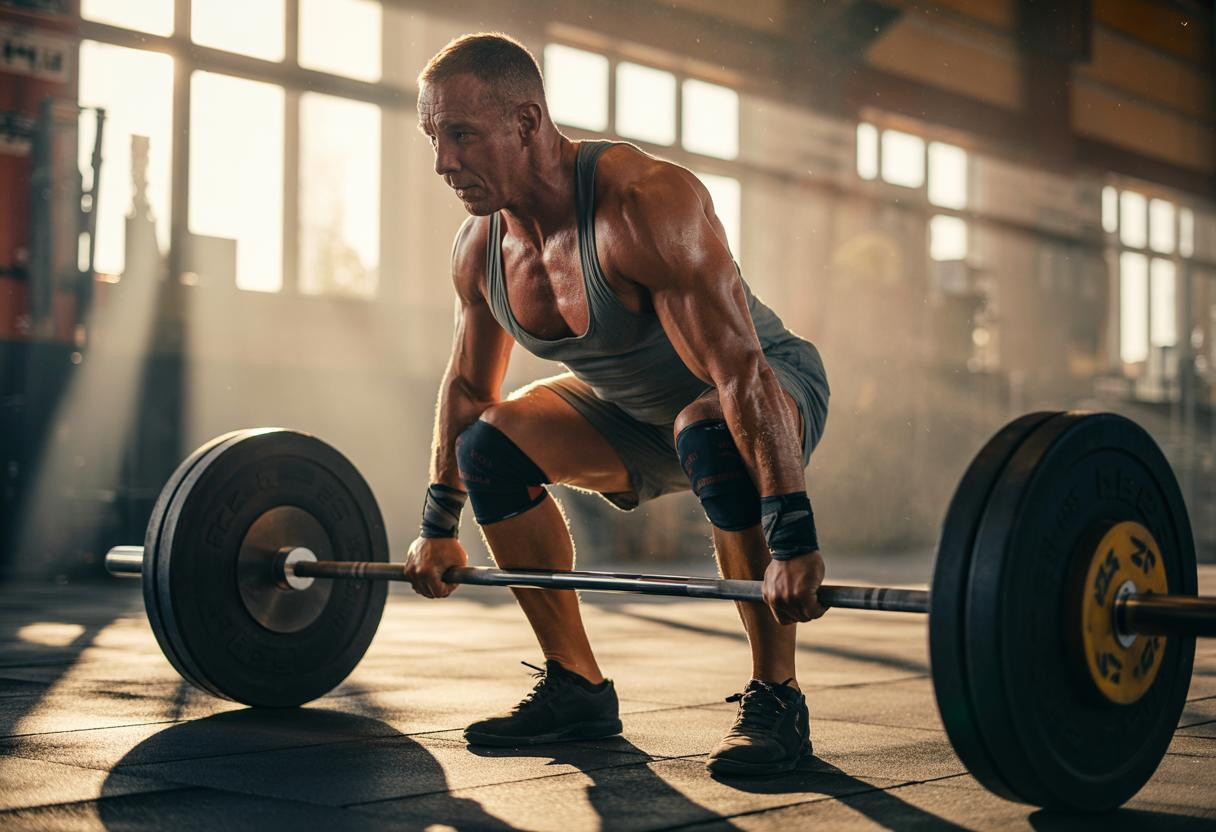The deadlift remains one of the most powerful compound exercises in any fitness routine, but approaching this exercise after 40 requires special consideration. As our bodies change with age, so should our training methods. I’ve consulted with top physiotherapists to bring you evidence-based guidance that will help you deadlift safely and effectively in your 40s and beyond.
Why deadlifts become even more crucial after 40
After 40, our bodies naturally begin to lose muscle mass through a process called sarcopenia – approximately 3-8% per decade. “Deadlifts are particularly valuable for older adults because they engage multiple large muscle groups simultaneously, making them incredibly efficient for combating age-related muscle loss,” explains Dr. Sarah Thompson, physical therapist at Austin Rehabilitation Center.
Beyond muscle preservation, deadlifts strengthen bones, enhance metabolic health, and improve functional movement patterns essential for daily activities as we age.
The physiological changes affecting your deadlift technique
Your body at 40+ operates differently than it did in your 20s and 30s. Recovery takes longer, joints may be less forgiving, and mobility might be restricted. These changes don’t mean you should avoid deadlifts – they mean you need to adapt your approach.
“The biggest mistake I see in clients over 40 is trying to lift with the same intensity and frequency as they did in their younger years. Your body needs more recovery time now, but with proper technique, you can still make significant strength gains,” notes Dr. James Miller, sports medicine specialist.
Form becomes non-negotiable
When I work with clients over 40, I emphasize that proper deadlift technique isn’t just recommended – it’s essential. The margin for error decreases with age, and the consequences of poor form can be more severe.
Key form points physiotherapists want you to remember:
- Maintain a neutral spine throughout the entire movement
- Hinge at the hips rather than bending at the waist
- Engage your core before initiating the lift
- Drive through your heels while keeping them planted firmly
The smart way to progress your deadlift after 40
I’ve witnessed many clients in their 40s and 50s make remarkable strength gains with deadlifts, but the path looks different than for younger lifters. Think of your body now as a fine-tuned instrument rather than a bulldozer – finesse trumps brute force.
Physiotherapists recommend these progression principles:
- Start with 50-60% of your estimated maximum and add weight gradually
- Prioritize quality over quantity – perfect 5 reps over sloppy 10
- Allow at least 48-72 hours between deadlift sessions
- Include mobility work on recovery days
Variations that protect your joints
Standard barbell deadlifts aren’t the only option. Many of my 40+ clients find certain variations more comfortable while still providing tremendous benefits.
Consider incorporating the trap bar deadlift, which places less stress on the lower back while still targeting the posterior chain effectively. Sumo stance deadlifts may also be easier on your body if you have knee concerns or hip mobility limitations.
Recovery strategies physiotherapists swear by
“Recovery isn’t just something you do after working out – it’s an essential part of the training process itself, especially after 40,” emphasizes Dr. Laura Chen, rehabilitation specialist at Sports Medicine Associates.
Your muscles rebuild during rest periods, not during workouts. Incorporate active recovery like walking, swimming, or glute bridges between deadlift sessions to enhance blood flow without taxing your system.
When to modify or avoid conventional deadlifts
Sometimes the conventional deadlift isn’t appropriate, particularly if you’re dealing with certain conditions. Avoid traditional deadlifts if you have acute back pain, herniated discs, or severe osteoporosis.
If you’re concerned about exercises damaging your body after 40, consult with a physical therapist who can assess your individual needs and provide personalized guidance.
Are you making this common mistake?
The most dangerous deadlift error I see in older adults isn’t about technique – it’s about ego lifting. Like trying to run a marathon without training, attempting to deadlift weights that are too heavy can lead to injury and setbacks.
Remember that deadlifting is like planting a garden – consistent, patient effort yields the best results. Avoid common gym mistakes that can accelerate joint aging by prioritizing steady progress over impressive numbers.
Can you continue deadlifting well into your 60s and beyond? Absolutely! With proper form, appropriate modifications, and respect for your body’s changing needs, deadlifts can remain a cornerstone of your fitness routine for decades to come. Listen to your body, work with qualified professionals, and enjoy the remarkable strength and functional benefits this powerful exercise provides.
